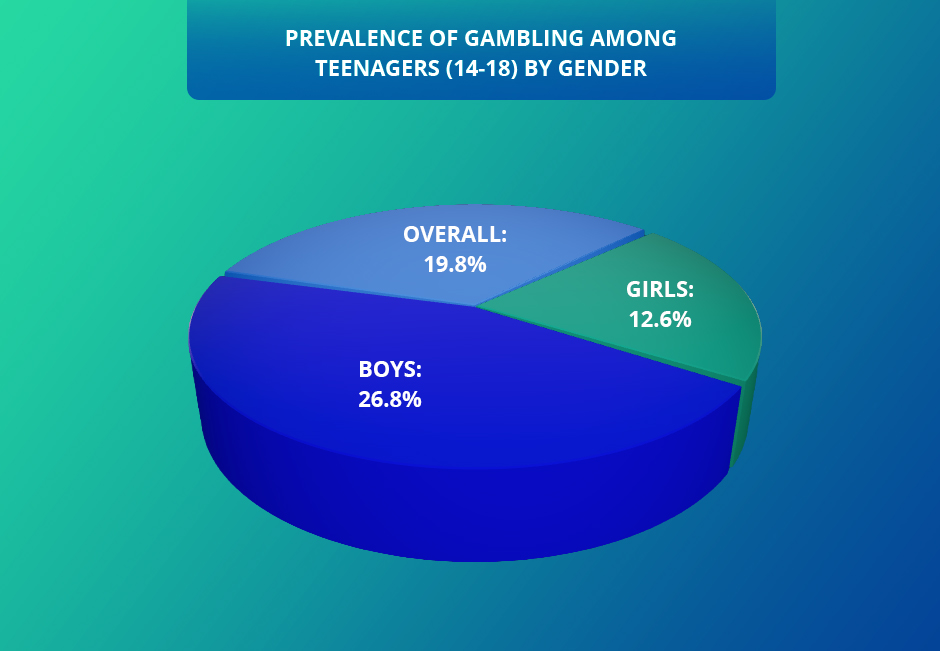
Spanish Ministry Warns About Gambling Risks Among Teenagers

Spain’s Consumer Affairs Ministry has issued a stark warning over rising teenage gambling and a lack of education about its dangers. According to its analysis, less than half of students have been taught about gambling risks.
The Ministry of Social Rights, Consumer Affairs and 2030 Agenda analyzed the impact of gambling on 14- to 18-year-olds. It assessed data from an ESTUDES study of 1.7 million secondary education students, prepared by the Spanish Observatory on Drugs and Addictions. It paints a troubling picture of teenage gambling in Spain.
How Many Spanish Teens Are Gambling?
The ESTUDES survey found that nearly one in five students admitted to having gambled for money at least once. Of those 19.8%:
- 16.6% gambled in person
- 9.2% played online
Perhaps most alarmingly, the average age for a young person’s first gambling experience was reported to be just 13.9 years. That is more than four years below Spain’s legal gambling age of 18.
This early onset is a well-documented risk factor. Studies confirm that individuals who begin gambling as minors are significantly more likely to develop gambling-related harm in adulthood.
A Critical Deficit in Education
A glaring deficit in public health education is at the heart of the Ministry’s concern. The survey revealed that only 48.4% of students reported receiving information or guidance on the risks associated with gambling.
This figure contrasts with the educational efforts surrounding other recognized adolescent risks. For example, 74% of students reported being taught about the misuse of technology; 72.3% about the dangers of legal drugs like alcohol and tobacco. Here is an overview of the students’ responses:
| Type of Education | Total |
|---|---|
| Effects and problems associated with legal drugs | 72.3% |
| Effects and problems associated with illegal drugs | 66.8% |
| Effects and problems associated with the misuse of new technologies | 74.0% |
| Effects and problems associated with online gambling and betting | 48.4% |
This disparity highlights a profound policy imbalance. Spain has enacted some of Europe’s most stringent controls on the gambling industry. However, it has seemingly neglected to build resilience and awareness among its youth.
“This study is an important tool for clearly identifying the risks of gambling in the younger population, in order to act more effectively to prevent early onset and problematic gambling practices in minors.”
Ministry of Social Rights, Consumer Affairs and 2030 Agenda
Problem Gambling Concerns by Gender and Game Type
The data also points to specific areas of concern regarding gender and game types. Gambling was found to be more than twice as common among boys (26.8%) as it was among girls (12.6%).

According to the study, 3.7% of students, about 63,000, showed signs of possible problematic gambling. Of this, boys were found three times more likely than girls to have gambling problems (5.5% vs. 1.9%).
Gambling type matters too. The activities identified as carrying the highest risk were betting, slot machines, and card games (Type III). Critically, the survey found that 26% of the students who had gambled on Type III activities already showed signs of potentially problematic behavior.
Here is a breakdown of the risk of problem gambling by game type:
- Type I (Lotteries and pools): 19%
- Type II (Instant lotteries and bingo): 18%
- Type III (betting, slot machines, card games): 26%
The conclusion is more positive regarding gambling frequency. The majority reported only occasional, low-spend activity:
- 62.5% gamble only once a year
- 63.2% spend no more than €6 a day
Despite the low frequency and spend, this high prevalence of risk indicators points to a potential future public health crisis.
Market Boom vs. Youth Protection
The Ministry’s alarm is set against a booming legal gambling market in Spain. In 2024, online gambling activity surged by over 20%, with the number of active players approaching two million.
Government reports attribute this explosive growth to the reinstatement of welcome bonuses. While such offers were prohibited under Royal Decree 958/2020, a Supreme Court ruling in April 2024 partially annulled key advertising restrictions.
This situation creates a paradox. Powerful player acquisition tools are boosting the market. At the same time, concerns over youth exposure and harm are reaching a fever pitch.
The demographic of the legal market in Spain has possibly normalized gambling for teenagers.
- 85.7% of players are aged 18-45
- 83% of gamblers are male
- Marketing spend hit €526 million in 2024
- Gambling adverts heavily target young men
The high visibility of gambling among young adult men is amplified by a large marketing spend. This inevitably influences the perceptions and behaviors of their younger peers in the 14-18 age bracket.
A Fractured Response to Player Protection
The response to these challenges has been multifaceted. The government has signaled its intent to re-ban welcome bonuses through new legislation. It is also advancing proposals for stricter, universal ID verification for land-based machines to curb underage access to gambling.
Player protection advocates, such as the Spanish Federation of Rehabilitated Gamblers (FEJAR), have voiced deep concern. They have called for mandatory identification across all forms of gambling. This includes lottery scratch cards, which they have identified as a key and often overlooked gateway for minors.
In contrast, the industry association Jdigital has warned that excessively restrictive measures on the legal market risk pushing consumers toward the unregulated black market. The illegal sector saw an estimated 23% growth in 2024.
The Path Forward for a Safe and Sustainable Gambling Industry
Looking ahead, Spain is placing a significant bet on technology. The Directorate General for the Regulation of Gambling (DGOJ) is developing a sophisticated, AI-driven surveillance system. It is programmed to monitor over 60 behavioral indicators in real-time to detect markers of harm.
This represents a clear shift toward proactive, individualized harm prevention. However, the system has drawn criticism for a foundational flaw – it is set to exclude state-run lotteries. This is the most popular form of gambling in Spain and a primary entry point for young people, according to the government’s own data.
Final Thoughts on Protecting Spanish Teenagers
The ESTUDES survey serves as an undeniable wake-up call. For Spain, the challenge is now to develop a cohesive national strategy that combines regulation, education, and prevention. It must bridge the gap between its advanced regulatory ambitions and lagging educational framework.
Spain should draw on the best practices of youth gambling awareness initiatives in other countries. Overall, it must focus on the protection of its most vulnerable citizens in an era of unprecedented growth.
One thing is clear: without urgent action, today’s teens risk becoming adults with gambling addiction.

